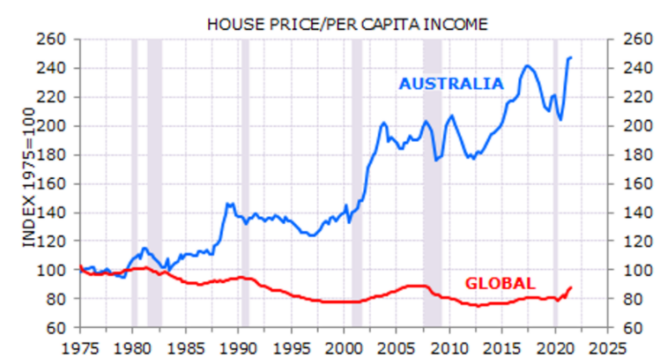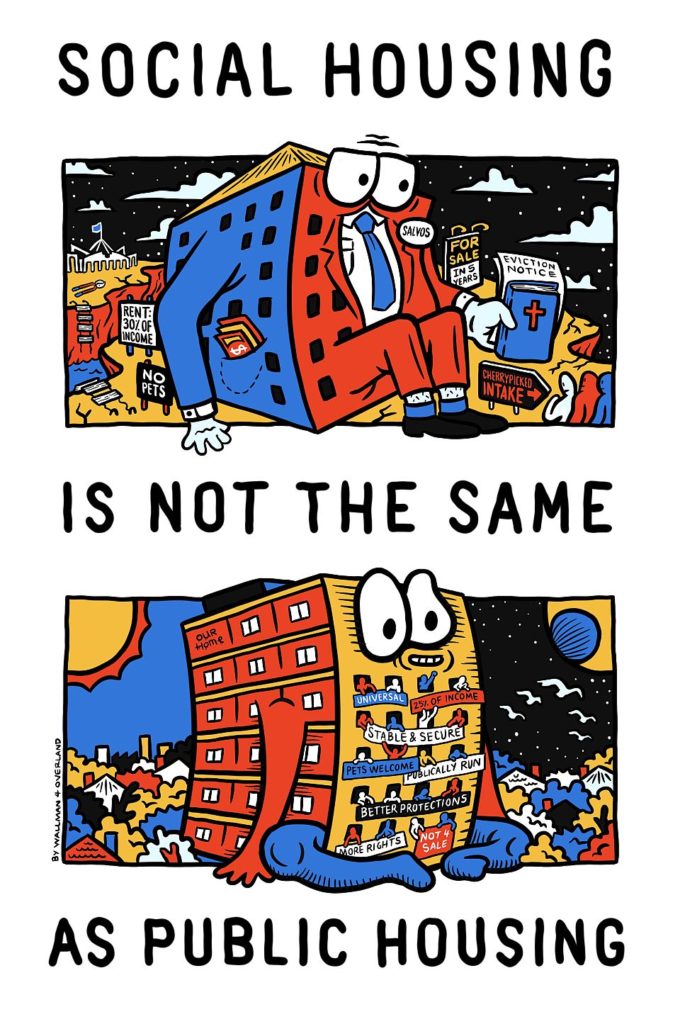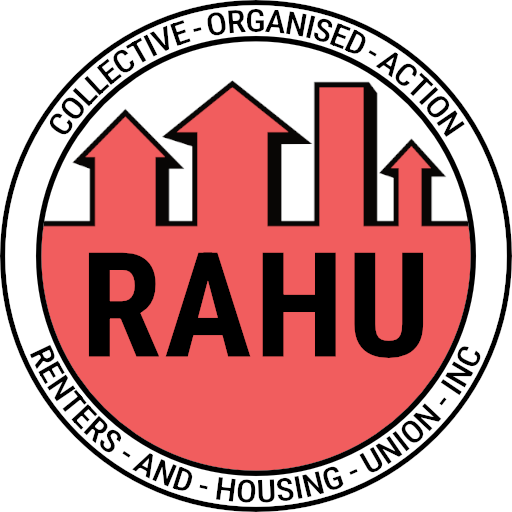Organise with RAHU
“Housing crisis” is increasingly being used to describe Australia in the media. Many look towards the 2022 election for hope in housing. The Liberals, as usual, offer upper class options, suggesting to “just buy a house”. Labor has refused to commit to any public housing, only social housing, with nothing to offer to renters.

Property development and real estate industry lobbies determine housing policy in Australia. The Property Council vetoed 2022 Victorian Government policy to add a tiny 1.75% tax on developments to fund social housing. During the 2016 federal election they organised the campaign to defend negative gearing. This became a notable factor in Labor’s surprise loss.
So how can we fix the housing crisis? With a union of course. RAHU – the Renters and Housing Union was formed in 2020 out of an IWW organised rent strike campaign in Victoria. In its first two years, RAHU has clawed back $126,775.20 in debt to renters from the owning class. As a rank-and-file union, RAHU believes collective action is our best bet at achieving structural change. A strong union can make landlords, real estate agencies, Labor and Liberal governments listen to our needs.

Rent is high, wages are low, standards are dismal. Renters are plagued by broken facilities and untimely repairs. Finding a house in the inner suburbs of Melbourne with a working oven or dishwasher is like finding a needle in a haystack.
Class warfare reigns with landlords squeezing every last dollar, finding any reason to take away your bond. These thefts are often challengeable. The union recouped $12,000 in members’ bond money within its first year.
Renters suffer dodgy builds with bad insulation, no air conditioning, that get fatally hot in summer and increasingly cold in winter. Climate change poses an increased risk on the homeless and the housed. In Australia, there’s been at least 4500 heat-related deaths since 1900, more than all other natural disasters combined. By 2050, 1000+ heat related deaths a year are expected in Perth, Sydney, Brisbane and Melbourne.
Rental stress, defined as 30%+ of your income, has become the norm. Insecure housing disproportionately affects people along typical capitalist lines, such as women, LGTBQ+ people, disabled people and ethnic and racial minorities. Traditional Owners of these lands are at a higher risk of being unhoused.
While stark, this is a huge organising opportunity. 33%+ of Australians, and increasingly more each year, do not own a home, which shows that many working people are facing this common problem. Collectively organised renters can build class consciousness through education. Together we can take action against landlordism on stolen land.
Organising labour unions is a hard path in Australia. Major unions are not socialist, none are syndicalist. The Accords killed the power of the industrial union, and numbers have dwindled ever since the turn of neoliberalism – thanks Hawke! Casualised workers now have multiple workplaces across multiple industries. Which means One Big Union is needed more than ever, as nobody wants to join 3+ unions to be represented.
Another path forward to consider is organising renters and housing unions. If you’re like many workers, your landlord takes more of your wage than your employer or the state. Housing is a mostly unorganised space in Australia and an incredibly commonly felt issue in the working class. Our best pathway to One Big Union is organising across the broadest worker needs. Organised labour in Australia aims to increase wages, but rent will just rise to follow. We need to attack the cost of living squeeze from both directions.
One Big Union is the goal of the IWW. A syndicalist union with thousands of members is a huge leap forward for socialism in Australia and is very possible. Renters unions are being organised around the world, many by Wobblies such as ACORN in the UK. This could lead to international solidarity actions.
As a small renters union, RAHU has informed members of their rights, building class consciousness. The union has also been successful with council and state lobbying. Union petitioning led to the extension of the COVID19 Eviction Moratorium and Rental Relief measures in Victoria in 2020-2021. RAHU also helped form SEQUR – South East Queensland Union of Renters. SEQUR recently won its first campaign – $4500 in compensation for a member from Little Real Estate.
As RAHU has grown, the potential has grown, allowing for collective action against specific real estate agencies and improved bargaining power. RAHU has set the precedent that renters cannot be forced to use invasive third party apps to manage their tenancy, such as pay rent. As RAHU grows, it can slow rent increases and improve minimum standards.
The potential of a mass renters union is much greater. A union gives power to the often threatened but undelivered “rent strike”, and furthers the prospect of abolishing landlordism once and for all. Organised housing has huge revolutionary potential, notably the Land Reform Movement in Maoist China and the Green Bans in Australia.
RAHU is a member-run union, and cannot achieve any of this without its membership.
Join RAHU. Consider taking an organiser training. Both the IWW and RAHU organise these, based on similar content for different contexts. You can also jump right into becoming an organiser – start a local branch anywhere or help build an existing one. If you have particular skills or interests you can join a committee. Learn more at rahu.org.au or contact us at [email protected]
